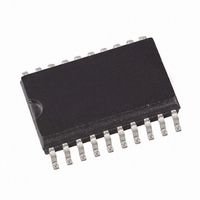ATA5724P3-TKQY Atmel, ATA5724P3-TKQY Datasheet - Page 5

ATA5724P3-TKQY
Manufacturer Part Number
ATA5724P3-TKQY
Description
IC RCVR ASK/FSK UHF 20-SSOP
Manufacturer
Atmel
Datasheet
1.ATA5723-DK.pdf
(46 pages)
Specifications of ATA5724P3-TKQY
Frequency
433MHz
Sensitivity
-113dBm
Data Rate - Maximum
10 kbps
Modulation Or Protocol
ASK, FSK
Applications
General Purpose
Current - Receiving
11mA
Data Interface
PCB, Surface Mount
Antenna Connector
PCB, Surface Mount
Voltage - Supply
4.5 V ~ 5.5 V
Operating Temperature
-40°C ~ 125°C
Package / Case
20-SOIC (0.200", 5.30mm Width)
Operating Temperature (min)
-40C
Operating Temperature (max)
105C
Operating Temperature Classification
Industrial
Product Depth (mm)
4.4mm
Operating Supply Voltage (min)
4.5V
Operating Supply Voltage (typ)
5V
Operating Supply Voltage (max)
5.5V
Lead Free Status / RoHS Status
Lead free / RoHS Compliant
Features
-
Memory Size
-
Lead Free Status / Rohs Status
Compliant
Available stocks
Company
Part Number
Manufacturer
Quantity
Price
Part Number:
ATA5724P3-TKQY
Manufacturer:
ATMEL/爱特梅尔
Quantity:
20 000
3. RF Front-end
9106E–RKE–07/08
The RF front-end of the receiver is a low-IF heterodyne configuration that converts the input sig-
nal into about 1 MHz IF signal with a typical image rejection of 30 dB. According to Figure
1-2 on page 3
mixer, polyphase low-pass filter and an IF amplifier.
The PLL generates the drive frequency f
integrated low noise LC-VCO (Voltage Controlled Oscillator) and PLL-loop filter. The XTO (crys-
tal oscillator) generates the reference frequency f
or f
mixer drive frequency f
four circuit (f
f
pared with f
and thereby generates the control voltage for the VCO. If f
lated using the following formula:
f
bands.
The XTO is a two-pin oscillator that operates at the series resonance of the quartz crystal with
high current but low voltage signal, so that there is only a small voltage at the crystal oscillator
frequency at pins XTAL1 and XTAL2. According to
to GND with two capacitors C
these capacitors are recommended by the crystal supplier. Due to an inductive impedance at
steady state oscillation and some PCB parasitics, a lower value of C
necessary.
The value of C
f
find the right value for this capacitor.) When designing the system in terms of receiving band-
width and local oscillator accuracy, the accuracy of the crystal and the XTO must be considered.
Figure 3-1.
The nominal frequency f
using the following formula (low-side injection):
f
VCO
REF
XTO
LO
= f
REF
= f
and hence of f
is divided by a factor of 128 or 64 and feeds into a phase frequency detector and is com-
RF
LO
= f
– f
/128 for 868 MHz band, f
XTO
IF
REF
LO
/3 (315 MHz version). The integrated LC-VCO generates two or four times the
Lx
XTO Peripherals
the front-end consists of an LNA (Low Noise Amplifier), LO (Local Oscillator), I/Q
. The output of the phase frequency detector is fed into an integrated loop filter
= f
should be optimized for the individual board layout to achieve the exact value of
VCO
LO
. (The best way is to use a crystal with known load resonance frequency to
/2 for 868 MHz version, f
VCO
LO
. The I/Q signals for the mixer are generated with a divide by two or
is determined by the RF input frequency f
L1
and C
REF
TEST3
TEST2
XTAL2
XTAL1
DVCC
= f
L2
LO
ATA5723/ATA5724/ATA5728
LO
from XTAL1 and XTAL2 respectively. The value of
for the mixer using a fully integrated synthesizer with
/64 for 433 MHz bands, f
V
LO
S
REF
= f
Figure
VCO
= f
/4 for 433 MHz and 315 MHz versions).
XTO
C
C
L2
L1
3-1, the crystal should be connected
/2 (868 MHz and 433 MHz versions)
LO
is determined, f
RF
REF
and the IF frequency f
L1
= f
and C
LO
XTO
/64 for 315 MHz
L2
can be calcu-
is normally
Figure
IF
5














